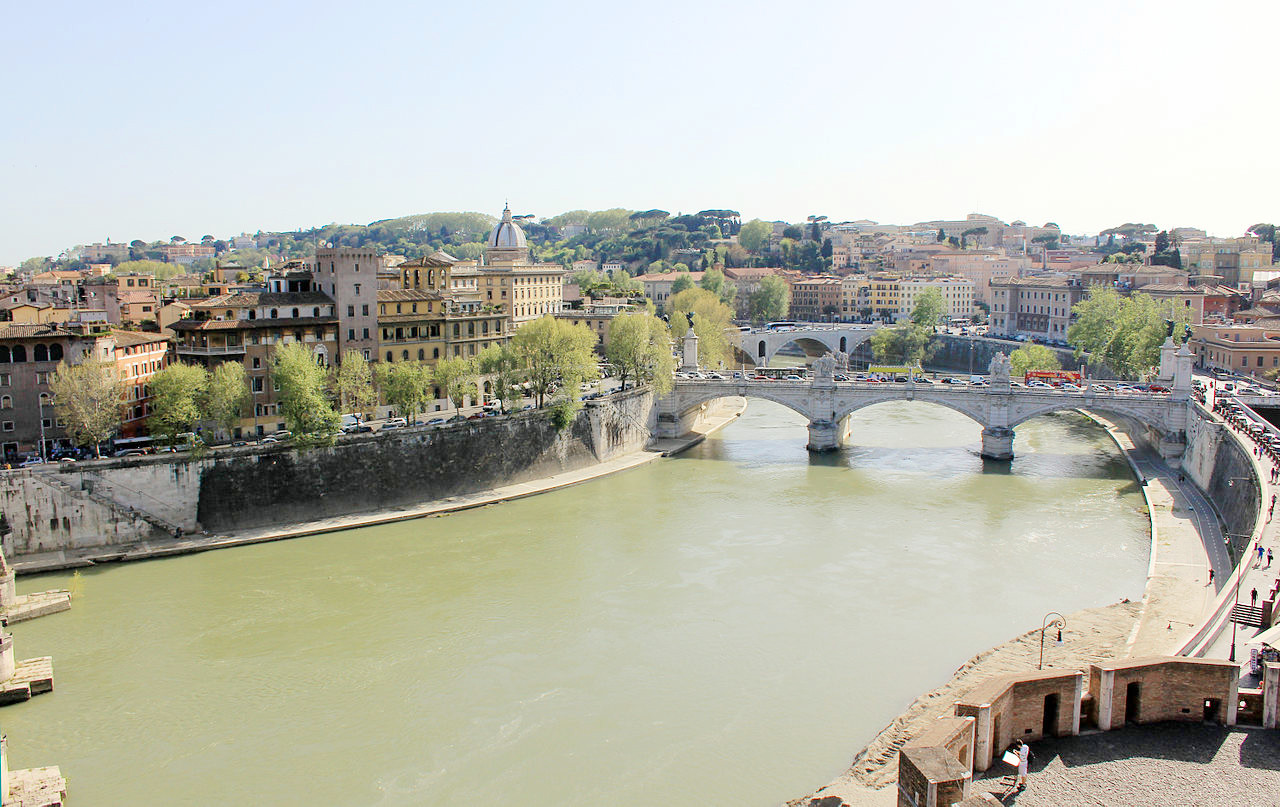The Geography of
Lazio
Why visit Lazio?
Lazio is a region of great contrasts. In the mountains we have the Apennines, with dry plateaux and well watered valleys. Vines and olives flourish on the hills and slopes. The Tiber, a very important river, crosses the Roman Campagna, past the glorious Roman ruins strewn across the landscape.
Contents
Map
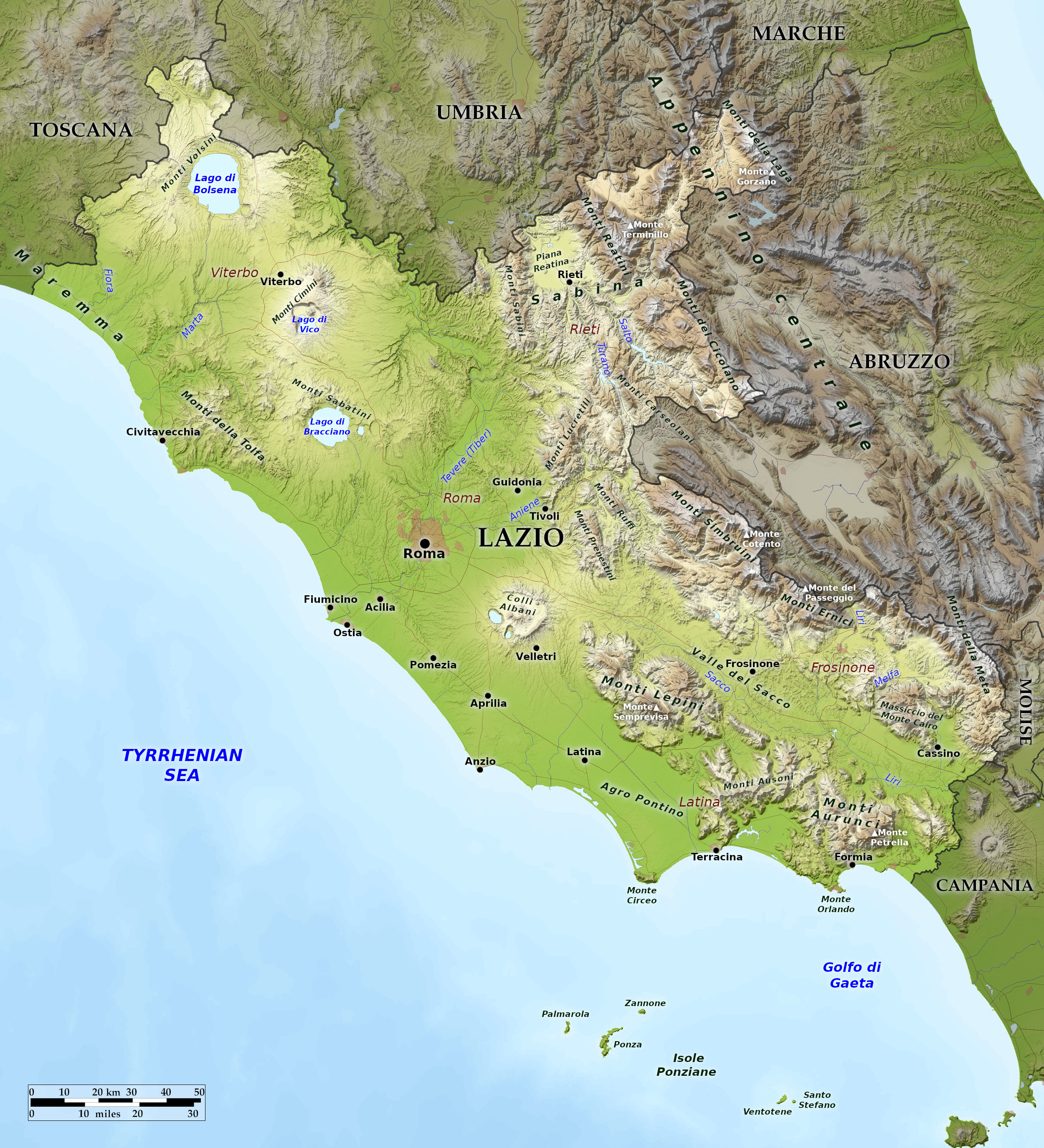 Relief map of Lazio
Relief map of Lazio
What is the landscape of Lazio like?
Lazio is a western province of Italy whose coastline faces the Tyrrhenian Sea. About fifteen miles inland from the coast, the city of Rome sits on the Tiber (Tevere) River, the region's major waterway, which snakes along the Umbrian border until it fully enters Lazio and continues south to the Tyrrhenian Sea.
The lightly undulating Roman Campagna surrounding the city of Rome, lies on either side of the lower Tiber and has a grandeur in itself: in its beautiful sunsets and in the gigantic and glorious Roman ruins strewn across the landscape—arches of ruined aqueducts and rows of tombs. Brown in summer, the land is covered in the spring with varied flowers and waving grasses. The remains of ancient roads traverse this plain in every direction—routes where the Roman legions once marched.
Most of the region is hilly (54 percent) or mountainous (26 percent), and its eastern reaches form ranges of the central Apennines. Stretches of the coast are plains or reclaimed marshland, and there is a string of coastal beach resorts. Lakes of volcanic origin dot western Lazio, the largest being Bracciano, between Rome and Viterbo, and Bolsena, near the Tuscan border.
What is the nature of Lazio like?
The coasts of Latium are very regular, low and sandy, with just a few headlands. The central region is occupied by the Roman Campagna, a large alluvial plain surrounding the city of Rome. The southern districts have the flatlands of Agro Pontino, a once swampy area, that was reclaimed over the centuries.
The Apennines are to a large extent covered with forests, meadows and pastures. Stands of chestnut trees are found on the lower slopes, but the higher slopes are covered with dense forests of beech trees.
What is the climate of Lazio like?
The climate is very different between the regions of Lazio. The coast has a maritime climate with mild winters and hot summers; rain being rather scarce along the northern coastal stretch. Inland the climate is more continental and on the mountains the winters are cold. Rainfall generally increases with altitude and is concentrated towards winter seasons, summer being dry. In winter there is generally snow from the medium altitudes upwards; only very rarely reaching Rome.
| Climate data for Rome (1971–2000) | |||||||||||||
|---|---|---|---|---|---|---|---|---|---|---|---|---|---|
| Month | Jan | Feb | Mar | Apr | May | Jun | Jul | Aug | Sep | Oct | Nov | Dec | Year |
| Average high °C (°F) | 12.6 (54.7) | 14.0 (57.2) | 16.5 (61.7) | 18.9 (66.0) | 23.9 (75.0) | 28.1 (82.6) | 31.5 (88.7) | 31.7 (89.1) | 27.5 (81.5) | 22.4 (72.3) | 16.5 (61.7) | 13.2 (55.8) | 21.4 (70.5) |
| Daily mean °C (°F) | 7.4 (45.3) | 8.4 (47.1) | 10.4 (50.7) | 12.9 (55.2) | 17.3 (63.1) | 21.2 (70.2) | 24.2 (75.6) | 24.5 (76.1) | 20.9 (69.6) | 16.4 (61.5) | 11.2 (52.2) | 8.2 (46.8) | 15.3 (59.5) |
| Average low °C (°F) | 2.1 (35.8) | 2.7 (36.9) | 4.3 (39.7) | 6.8 (44.2) | 10.8 (51.4) | 14.3 (57.7) | 16.9 (62.4) | 17.3 (63.1) | 14.3 (57.7) | 10.5 (50.9) | 5.8 (42.4) | 3.1 (37.6) | 9.1 (48.4) |
| Average precipitation mm (inches) | 69.5 (2.74) | 75.8 (2.98) | 59.0 (2.32) | 76.2 (3.00) | 49.1 (1.93) | 40.7 (1.60) | 21.0 (0.83) | 34.1 (1.34) | 71.8 (2.83) | 107.0 (4.21) | 109.9 (4.33) | 84.4 (3.32) | 798.5 (31.44) |
| Source: Servizio Meteorologico | |||||||||||||
 Colosseum viewed from the Palatine Hill
Colosseum viewed from the Palatine Hill
The official websites
Lazio
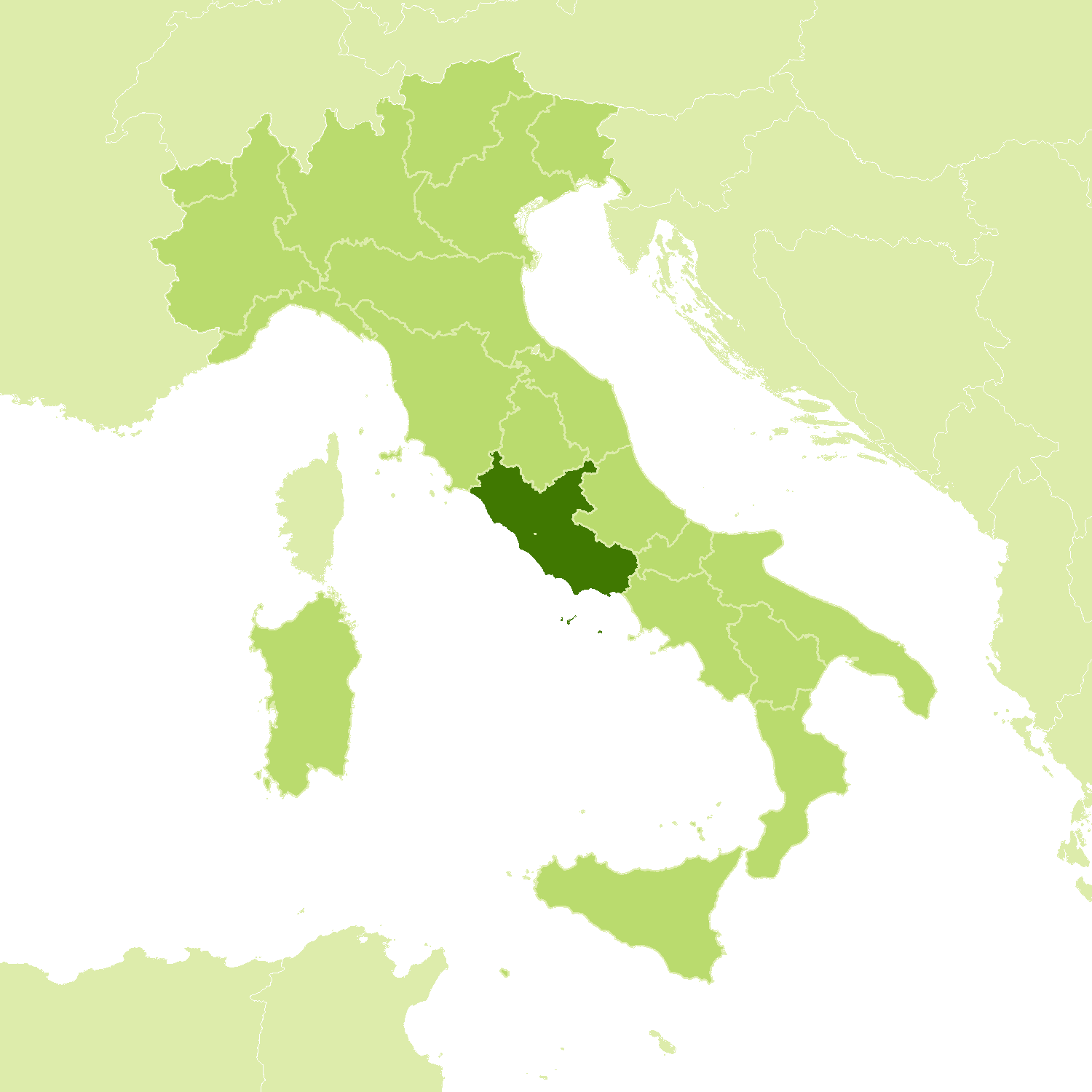
Italy's Roman heart
| Location: | Western Italy |
| Coordinates: | 42° 00′ N, 12° 30′ E |
| Size: | • 185 km N-S; 215 km E-W • 115 miles N-S; 135 miles E-W |
| Terrain: | Hilly or mountainous, rising to the Apennines in the east. Coastal regions are plains or reclaimed marshland. Lakes of volcanic origin dot the west |
| Climate: | High levels of sunshine and hot, dry summers. Higher rainfall in the mountains. Cool winters; snow in the mountains but rare in the lowlands |
| Highest point: | Monte Gorzano 2,458 m |
| Forest: | 30% (2010 est.) (source) |
| Population: | 5,864,321 (2019) |
| Population density: | High (340/km²) |
| Capital: | Roma (English: Rome) |
| Languages: | Italian |
| Human Development Index: | Very High (0.914) |
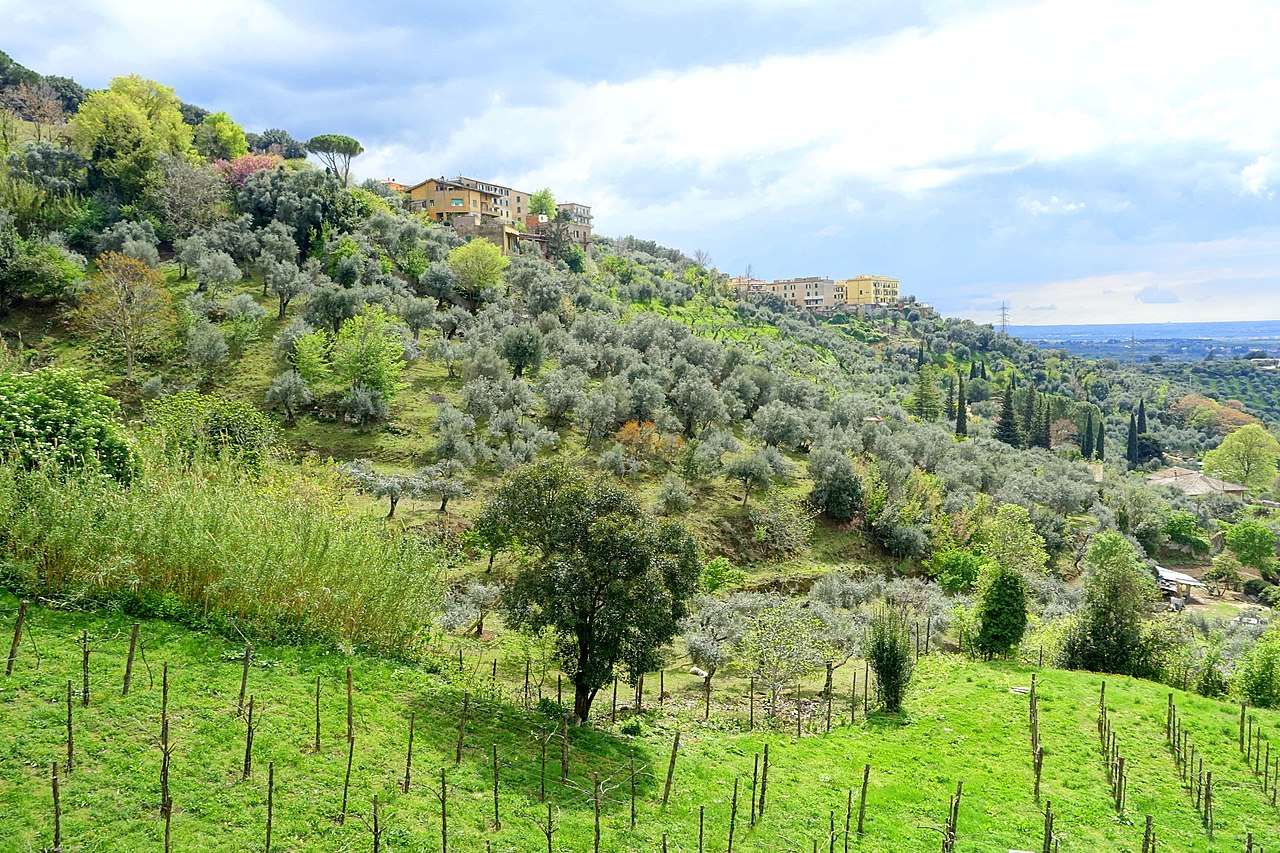
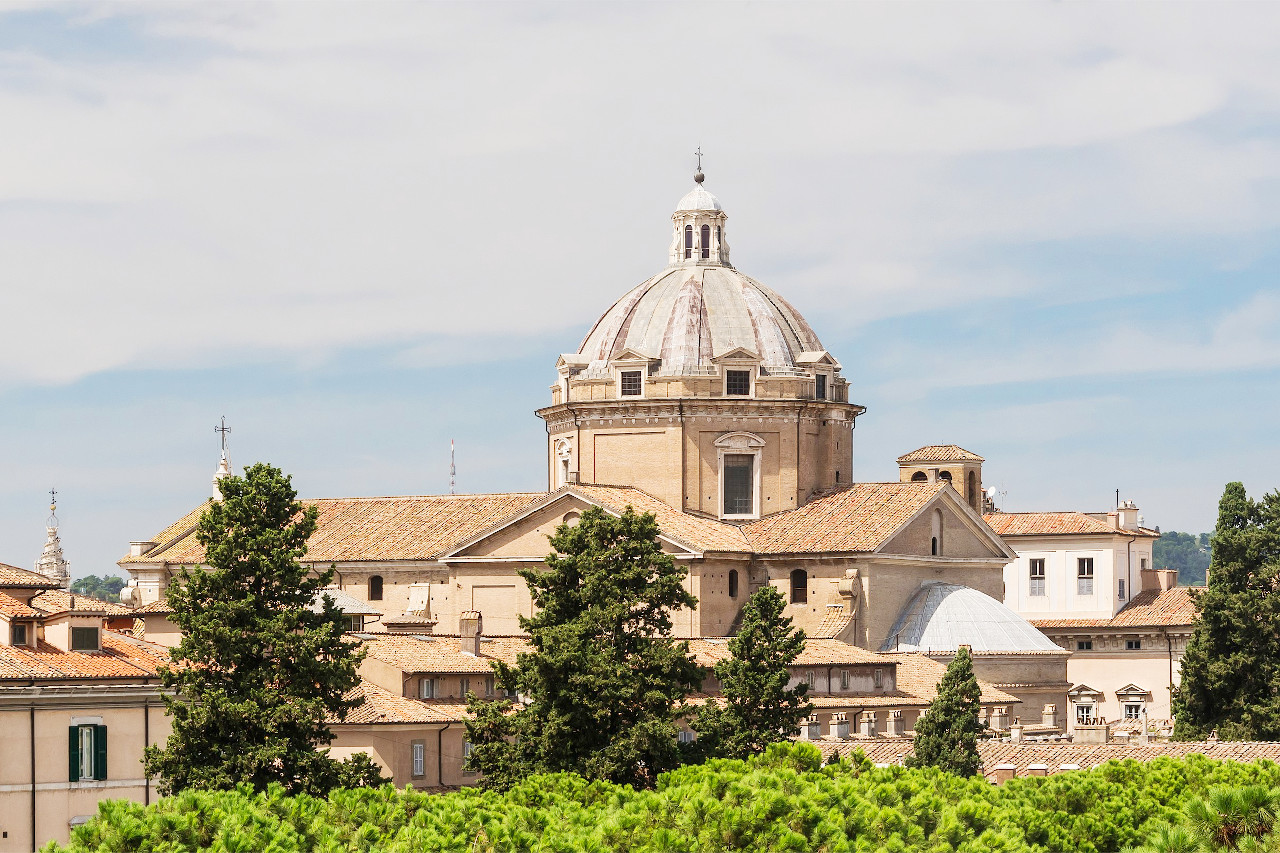
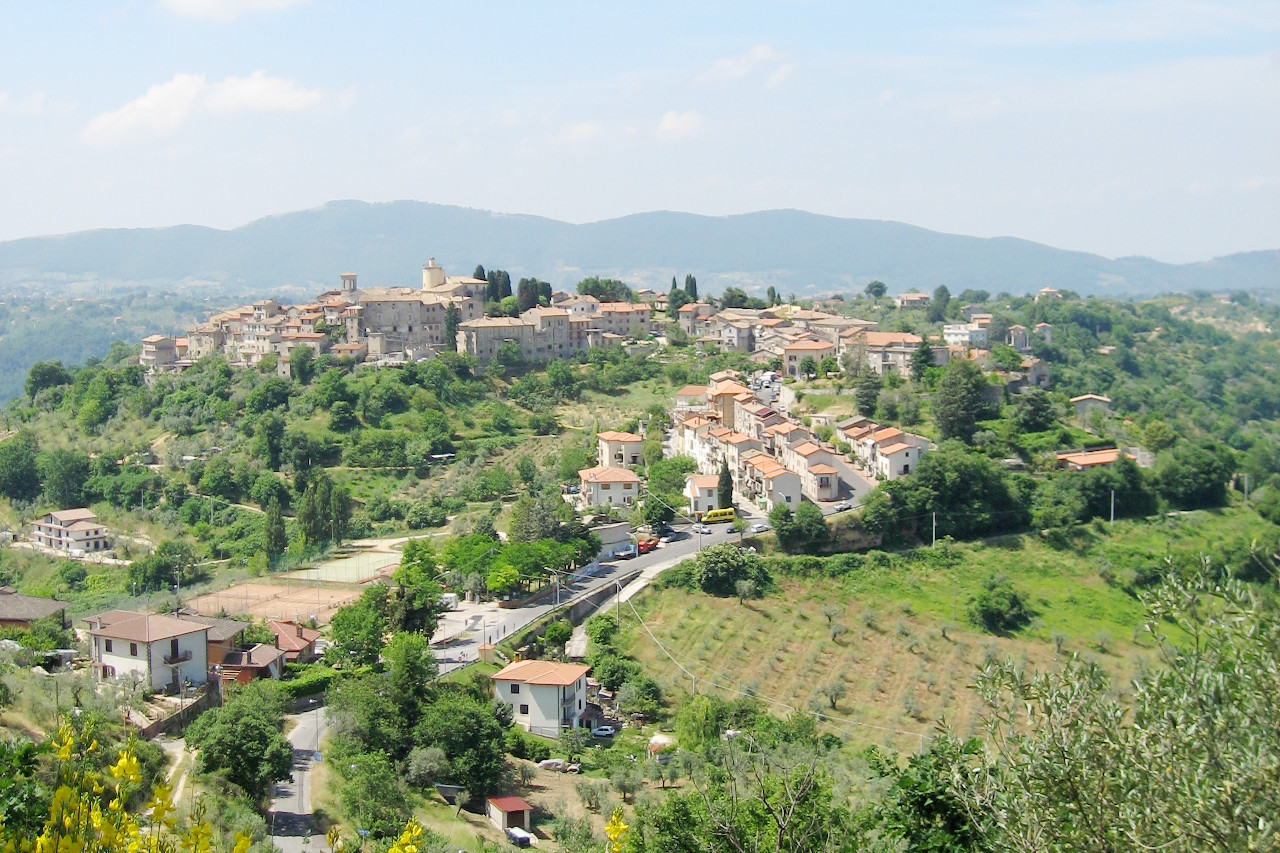
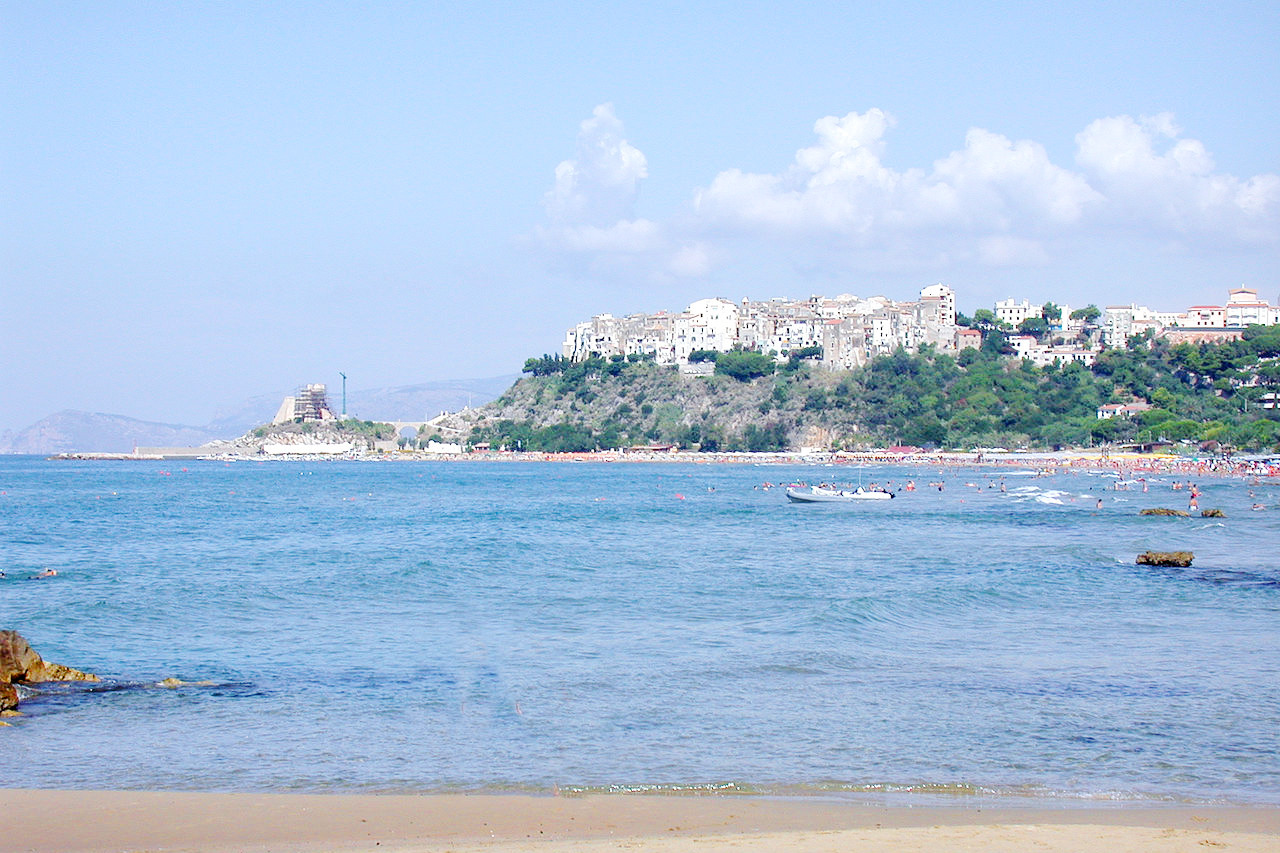

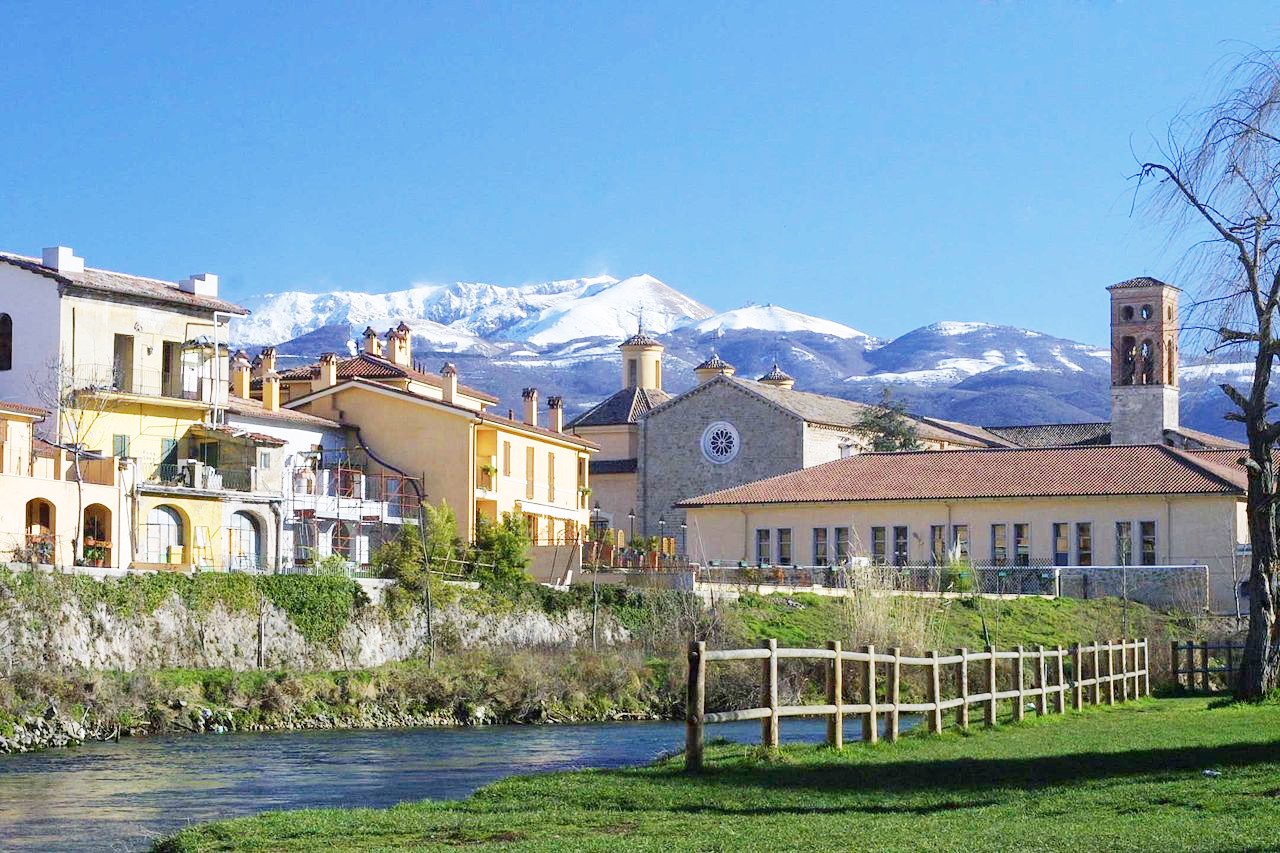

_2017.1.jpg)
